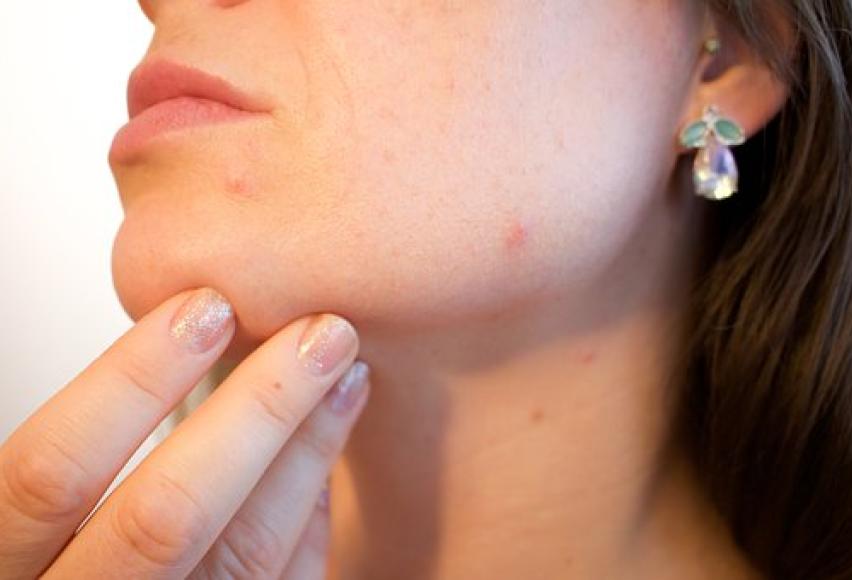When teen picking becomes a problem

Online test
Find out the severity of your symptoms with this free online test
It is not uncommon for people to subconsciously rub, touch, or scratch at their skin, just as it is a common practice for many people to pick at skin imperfections such as acne or blackheads. However, for some, this practice becomes so consuming that it is classified as a skin picking disorder known as excoriation disorder or dermatillomania. Picking your skin becomes problematic when the picking is repetitive and it becomes difficult for the person to voluntarily stop engaging in the behavior, and impacts negatively on daily functioning. This poorly understood problem often goes undiagnosed and therefore untreated.
Types of Teen Picking
Picking is particularly common in the teen years when skin problems like acne often surface. There are three types of teen picking:
- those who actually heeded their mothers’ constant nagging, never squeezing at a bump, and let scabs survive full-term;
- those who may scratch at a mosquito bite one too many times before realizing the error of their ways and opt for some hydrocortisone, who only occasionally pop a zit—as a very last resort, when and if the little guy is ready;
- and then there are those who plant themselves in front of their billion-watt, 10x magnifying mirror, inspecting and poking and squeezing and prodding—mostly at stuff that barely even qualifies as a clogged pore, until, an hour later, they’ve completely annihilated the surface of their skin, leaving it swollen and red.
How will I know if I have skin picking disorder?
Regular picking at pimples or other perceived skin imperfections does not necessarily mean you have skin picking disorder. There are very specific criteria that define the disorder, distinguishing it from other conditions that may present with similar behaviors. For example people with Body Dysmorphic Disorder (BDD), who have obsessive thoughts about perceived flaws in their appearance (either real or imagined) may also pick at their skin to remove these imperfections. There are also those who have suicide ideation or intentionally self-harm as a form of emotional release. While these behaviors may appear to have similarities with skin picking disorder, it is the combination of criteria and patterns of behavior that distinguishes one from the other. If you are concerned that you may have a skin picking disorder, there is a possibility that the behavior has escalated to an extent that warrants concern. In this case it is advisable to seek medical advice. Diagnosis of skin picking as a disorder is based on the criteria outlined in the Diagnostic and Statistical Manual 5 (DSM 5) as follows:
- Recurrent skin picking resulting in skin lesions
- Repeated attempts to decrease or stop skin picking
- The skin picking causes clinically significant distress or impairment in social, occupation, or other important areas of functioning
- The skin picking is not attributable to the psychological effects of a substance (e.g., cocaine) or another medical condition (e.g., scabies)
The skin picking is not better explained by symptoms of another mental disorder (e.g., delusions or tactile hallucinations in a psychotic disorder, attempts to improve a perceived defect or flaw in appearance in body-dimorphic disorder, stereotypes in stereotypic movement disorder, or intention to harm oneself in non-suicidal self-injury)
There is no definitive pattern of picking as the where, when, and how people pick at skin varies. While the most common area to pick skin is the face, picking can occur anywhere on the body where there is skin. Some other common areas include the back, shoulders, arms, legs and scalp. Some people pick only with their fingers or dig into their skin with their finger nails, while others use their teeth, or tools such as tweezers, pins or any other sharp objects they have access to.
If you suspect you may have skin picking disorder, you should visit a health professional and express these concerns. However, awareness about skin picking disorder is still limited, even among the health fraternity. Having some knowledge about the condition and these criteria when you visit your health practitioner is therefore recommended.
Online test
Find out the severity of your symptoms with this free online test
Start your journey with SkinPick
Take control of your life and find freedom from skin picking through professional therapy and evidence-based behavioral techniques.
Start Now



